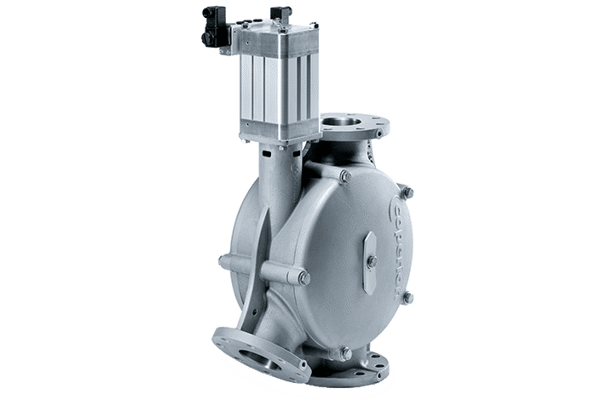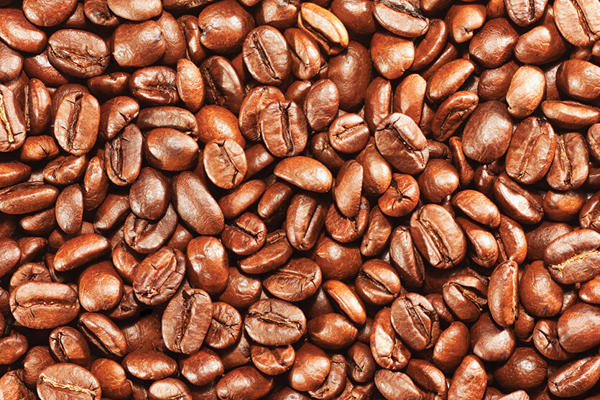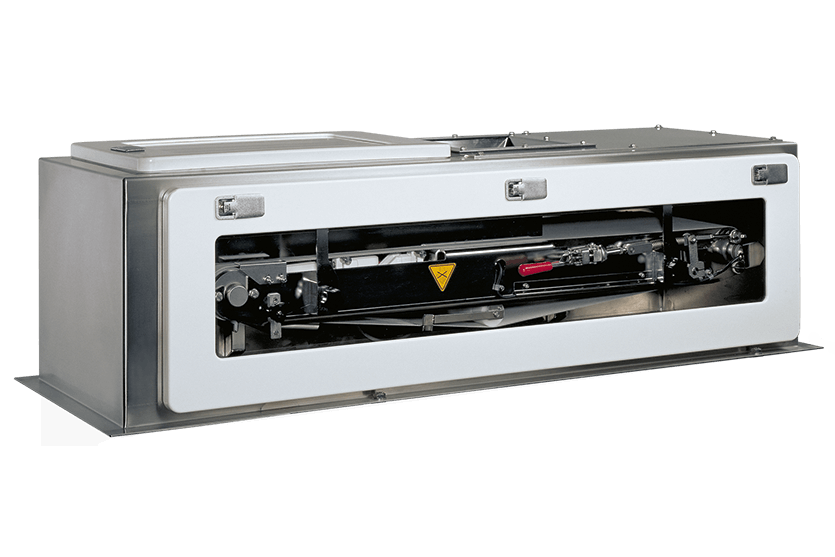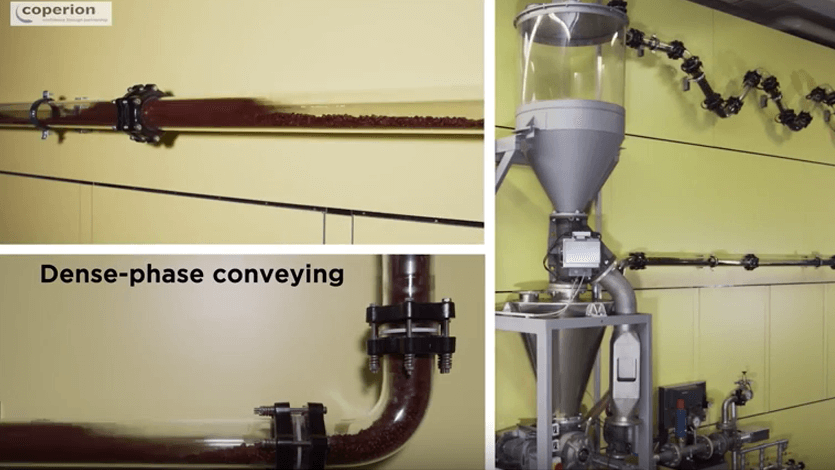Which is better for ingredient batching – gain-in-weight (GIW) or loss-in-weight (LIW)?
Both LIW feeders and GIW feeding systems can be used in batching systems but they work in different ways. These differences typically make the LIW feeder better suited for dispensing ingredients with high accuracy requirements.
The LIW feeder is suspended from or rests on high resolution load cells and dispenses powder into the receiving vessel at a rate based upon sensing the feeder’s loss in weight. The LIW feeder’s weight sensing device provides high speed high resolution weight loss measurements of the powder in the feeder hopper. A graphic depiction of a LIW batching application with two LIW feeders simultaneously dispensing ingredients into a vessel is shown below in Figure A.
The GIW feeding system includes one or more volumetric feeders above a hopper that is suspended from high capacity load cells or rests on a high capacity floor scale. The volumetric feeders can be hoppers with rotary valves, screw feeders or other mechanical feed devices. Each volumetric feeder sequentially dispenses powder at a rate based upon sensing the gain in weight of the entire hopper and its contents. In the GIW batching application shown below in Figure B, two volumetric feeders sequentially dispense ingredients into the hopper below.
Which feeder type is best for your batching application depends on several factors, including the total batch size, the number of ingredients in the batch, your desired batching time, each ingredient’s flow characteristics, and your applications accuracy requirements. When the batch ingredients include high cost items, such as probiotics, vitamins, costly flavors, etc., feeding accuracy can be a critical factor in determining whether the LIW or GIW batching method is best.
Here’s why: With a GIW feeding system, a volumetric feeder dispenses a powder into the receiving vessel mounted on load cells, which must detect the weight of ingredient addition as well as the full weight of the receiving vessel and the powder it already contains (in other words the full scale capacity). Because most high capacity load cells and floor scales don’t have enough speed or resolution to detect the additional weight of a small amount of powder relative to the much larger overall weight of the receiving vessel (e.g. hopper, reactor, mixer, etc.) and its contents, a GIW system’s expected batching accuracy is typically +/- 0.5% of full scale capacity. However, a LIW feeder can achieve batching accuracies of +/- 0.1% of the batch set point. This is because the LIW feeder’s operation depends on sensing only the weight of the ingredient being fed, rather than the much larger weight of the receiving vessel and all of its contents, and the LIW feeder's high-speed load cells provide very high resolution (typically 1 part in 4 million).
The LIW feeder can also speed up your batching operation. When a GIW system handles an application with multiple ingredients, multiple volumetric feeders (one per ingredient) must dispense the ingredients one at a time into the receiving vessel because the vessel is weighed for each ingredient. In contrast, multiple LIW feeders can all dispense their ingredients at the same time into the vessel because each ingredient is weighed as it is dispensed. This significantly cuts the total batching time.
Be aware, however, that using LIW feeders for all the ingredients in a multi ingredient batch can be expensive. A cost saving option may be to select a system that includes both GIW and LIW equipment. The GIW system can handle the lower cost macro ingredients that have lower accuracy requirements. The LIW feeders can dispense the more costly micros and minors, that have higher accuracy requirements or can dispense ingredients in large quantities, thus cutting the total batching time.



















